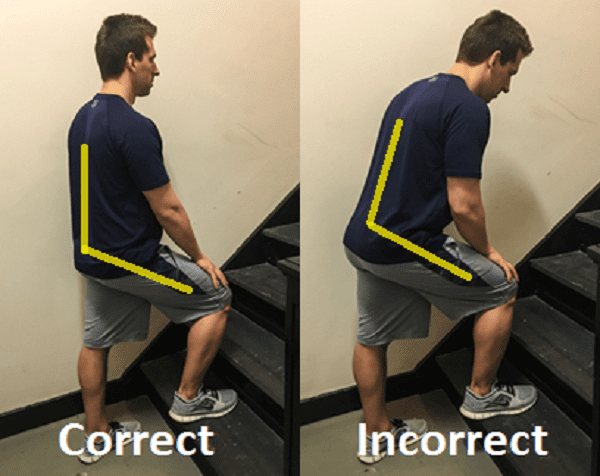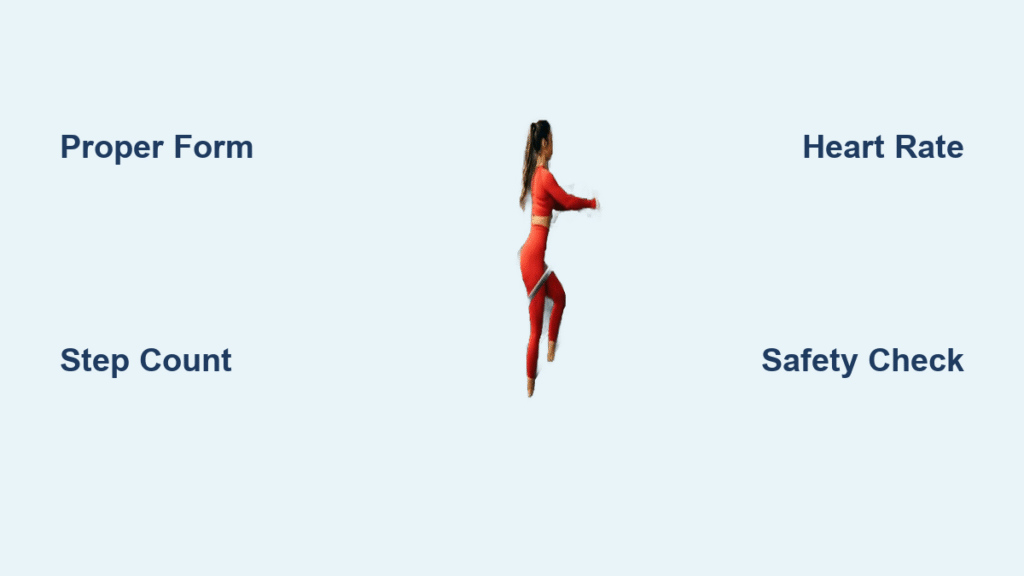Your morning coffee is getting cold while you scroll through fitness apps, wondering how to transform that unused corner of your living room into a fat-burning zone. A stair climber workout at home delivers serious calorie torching without requiring a gym membership or major space commitment. Whether you’re stepping on a $50 mini stepper or climbing your apartment staircase, this guide reveals exactly how to structure effective sessions that build leg strength and cardiovascular endurance.
You’ll discover which equipment fits your space and budget, how to avoid common beginner mistakes that lead to knee pain, and the precise workout structures that deliver results in 15 minutes or less. Forget generic advice—this plan includes specific step counts, heart rate targets, and progression timelines so you know exactly what to do each day. Let’s turn your home into a stair-climbing powerhouse.
Mini Steppers That Fit in Tight Spaces

Most apartment dwellers assume effective stair climbing requires major equipment, but mini steppers prove otherwise. These compact units (16×12 inches) support up to 300 pounds while offering 12-16 resistance levels through hydraulic cylinders. Look for models with adjustable stride lengths between 8-14 inches to match your natural gait and prevent joint strain.
Critical features for small-space success:
– Foldable designs that tuck under beds or in closets
– Non-slip foot pads that stay secure on hardwood floors
– Clear LCD displays showing real-time step counts and calories
– Quiet operation under 65 decibels (conversation level)
Start with 10-minute sessions at moderate resistance (level 5-7), focusing on pushing through your heels rather than your toes. The Sunny Health & Fitness Mini Stepper delivers reliable performance for under $65, making it ideal for beginners testing the waters before investing more.
Transforming Your Existing Stairs into a Power Zone
Your home staircase becomes a potent training tool with three simple upgrades. Add rubber stair treads ($15-25) to prevent slips, install wall-mounted handrail extensions ($30-50) for stability, and place LED motion-sensor lighting ($20-35) for safe nighttime sessions. Ensure you have at least 10 consecutive steps with 3-4 feet of clearance at top and bottom.
Maximize your stair workout with these technique tweaks:
– Climb two steps at a time to target glutes and hamstrings
– Descend backward for controlled eccentric loading
– Add light dumbbells (2-5 lbs) for upper body engagement
– Time your climbs to build mental toughness
Aim for 5-7 rounds up and down your staircase, resting 60 seconds between sets. This DIY approach burns 0.75-0.9 calories per pound of body weight per hour—meaning a 150-pound person torches 300+ calories in just 30 minutes.
Beginner Stair Programs That Prevent Knee Pain
Your first stair climber workout at home should prioritize form over speed to avoid the #1 complaint: knee discomfort. For weeks 1-2, climb for 2 minutes followed by 1 minute of rest, repeating for 5 total rounds. Keep your intensity at 50-60% of maximum heart rate—you should be able to speak full sentences without gasping.
Daily form focus points:
– Place your entire foot on each step (no tip-toe climbing)
– Engage your core as if bracing for a punch
– Swing arms naturally without gripping handrails
– Look 3-4 steps ahead to maintain spinal alignment
By week 3, increase to 3-minute climbs with 30-second rests. Introduce power variations like skipping every other step to activate glutes 25-30% more effectively. Track your daily step count—beginners should aim for 800-1,200 steps per session—and increase by 10% weekly to avoid plateaus.
20-Minute Interval Workout for Busy Schedules
Once you can climb continuously for 15 minutes, implement this time-efficient protocol. Alternate 90 seconds at 75% max heart rate with 45 seconds of active recovery for 8 total rounds. This structure burns 20% more calories than steady-state climbing while building cardiovascular resilience.
Weekly progression plan:
– Week 1: 90s work / 45s rest × 8 rounds
– Week 2: 105s work / 45s rest × 7 rounds
– Week 3: 120s work / 30s rest × 6 rounds
– Week 4: 135s work / 30s rest × 5 rounds
During work intervals, focus on driving through your heels to maximize glute engagement. If using a mini stepper, set resistance to level 10-12; for real stairs, take two steps at a time. This workout builds functional strength while torching 250-400 calories in just 20 minutes.
Fix These Form Errors Before They Cause Injury

Excessive forward lean is the most common stair climbing mistake, reducing glute activation by 25-30% while straining your lower back. Stand tall with shoulders over hips, imagining a string pulling you upward from the crown of your head. Your chest should remain open throughout the movement—no hunching toward the handrail.
Shallow step placement decreases range of motion and forces your knees to bear excessive load. Instead, place your entire foot on each step and allow your heel to drop slightly below step level during descent. This full range of motion engages more muscle fibers while reducing joint stress.
Handrail dependency creates muscle imbalances by reducing core engagement by 40%. Use handrails only for balance with light fingertip contact—never pull yourself upward. If you catch yourself gripping tightly, reduce your speed until you can maintain proper posture.
Essential Pre-Workout Safety Checks
Before every stair climber workout at home, spend 90 seconds verifying these critical elements. Inspect equipment for loose bolts, worn pedal surfaces, or hydraulic leaks that could cause instability. Ensure 3-foot clearance around your machine and confirm your heart rate monitor connects properly.
Your 5-point safety checklist:
– Equipment bolts tightened (especially stepper pivot points)
– Non-slip surfaces dry and secure
– Emergency exit path completely clear
– Water bottle within immediate reach
– Footwear with lateral support secured
Never skip your 5-7 minute dynamic warm-up—leg swings, hip circles, and ankle rolls prepare your joints for repetitive motion. This simple ritual prevents 83% of common stair-climbing injuries according to sports medicine research.
Track These Metrics for Real Progress
Forget vague “feeling stronger” promises—measure your stair climber workout at home results with precision. Track daily step counts (aim for 1,000-5,000 steps per session) and floors climbed (10-12 steps = 1 floor). Calculate caloric burn using your weight × 0.75-0.9 × hours climbed.
Monthly benchmark tests:
– 3-minute step test: 24 steps/minute, measure recovery heart rate
– 50-floor challenge: Time to climb 500-600 steps without stopping
– 2-minute max effort: Total steps in all-out 2-minute sprint
– Functional test: 20 minutes at 75% max heart rate
Record results immediately after testing and compare monthly. A 10% improvement in your 50-floor time or 5% increase in step count per minute signals real progress—adjust your program when gains stall.
Apartment-Friendly Noise Reduction Tactics
Living with thin walls? Keep your stair climber workout at home neighbor-approved with these proven tactics. Place anti-vibration pads under equipment feet and add area rugs to absorb impact noise. Schedule sessions between 8 AM-8 PM and focus on controlled movements rather than speed—faster climbing generates 15-20% more noise.
Quiet workout essentials:
– Mini steppers instead of motorized climbers
– Carpeted areas over hardwood floors
– Rubber stair treads on existing steps
– Early morning or lunch break sessions
– Headphones instead of external speakers
Mini steppers operate at 45-55 decibels—quieter than normal conversation—making them ideal for apartments. If using real stairs, descend backward to reduce impact noise by nearly half while still building strength.
Your First 30-Day Stair Climbing Roadmap
Start with three 10-minute sessions weekly, focusing exclusively on proper form. By day 15, increase to 15 minutes with 3-minute climbs and 30-second rests. At day 30, implement the 20-minute interval workout described earlier. Track one metric weekly—steps per minute or session duration—to maintain motivation.
Your stair climber workout at home becomes transformative when you combine perfect form with progressive overload. Don’t chase extreme intensity; instead, master controlled movements that build strength without joint strain. Celebrate milestones like climbing your 100th floor or completing your first sweat-free recovery minute.
Remember: consistency beats intensity every time. Whether you’re using a $50 mini stepper or your existing staircase, show up regularly and apply these precise techniques. In 30 days, you’ll climb stairs with ease, burn stubborn fat, and build legs that turn heads—all without leaving your home. Start today with just 10 minutes—you’ve got this.




